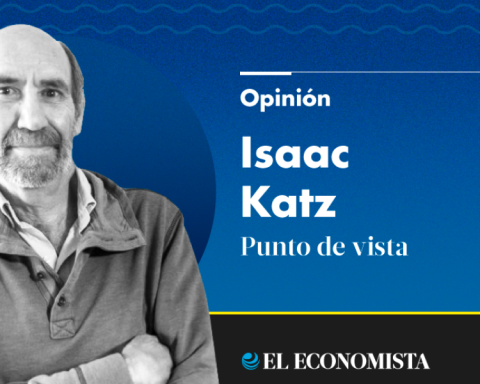No attention
From previous six years, the federal government has prioritized a prohibitionist drug policy and without respect for their human rights. The result is a criminalization of drug users, says Pacheco.
It also pays for public institutions to lack the capacity to provide comprehensive care and treatment for substance consumption.
Damage reduction programs for drug users, considered the most comprehensive and effective in terms of addictions, are implemented by civil organizations. One of them is prevention, a community center located in Tijuana, Baja California, which is dedicated to improving the health of the vulnerable population, including migrant.
‼ ️🚨👇🏽#Xilacin and #Fentanil They are present in our communities and community -based organizations are more alert than ever! 👀
🇲🇽 / 🇺🇸
📍Prevent / Tijuana.
📍verter / Mexicali.
📍A New Path / San Diego.
📍on Point / San Diego.
📍narcan Nate / San Diego. pic.twitter.com/isvfaa7qsk– Prevent (@preventasaac)
April 11, 2024
Organizations do this work even though the support for civil society agencies, and today, today, were canceled, and today, They also face the trimming of American funds for humanitarian aid.
That is why there are few places or clinics that have methadonea medication used in the prevention of withdrawal syndrome, which helps in addiction treatment. Access to other opioid replacement options or the Naloxonea drug that avoids overdose deaths.
“These care options are extremely limited in Mexico,” Lilia Pacheco laments. “People who already have a problematic opioid consumption will continue to consume fentanil if they are not offered another alternative to improve their health conditions.”
Approaches to this type are necessary because opioid withdrawal syndrome “is terrible” and because these substances are difficult to abandon, since they temporarily remove physical and emotional pain, he explains.

(Daniel Becerril / Reuters)
The prohibitionist effect
Zara Snapp, director of the RIA Institute, explains that for years Mexico maintains a prohibitionist policy and, nevertheless, drug use has not decreased. The effect of that measure is contrary: to a greater prohibition, more emergence of new substances, more powerful and risky.
In such a way that the sending of thousands of military to the border between Mexico and the United States will not stop traffic or the availability of fentanyl, he mentions, but will increase the persecution of users of substances.
With the policies they are proposing, we are not going to see an impact on consumption in Mexico, what we are going to see are greater risky practices for users ”,
Zara Snapp, director of the RIA Institute.
Fentanyl market in Mexico?
The agreements between the two countries to stop the traffic of fentanyl to the United States and the designation as terrorist groups of Mexican drug cartels raise several questions. For example, what will happen to the fentanyl market and if opioid production could be transferred to the United States if it is considered less risky to manufacture it there, near its main market.
“It can have a counterproductive effect of what the United States government is looking for,” says Snapp.
There is uncertainty about future effects. But, they coincide, It is almost impossible to eradicate fentanyl traffic. In part, because it is a drug that is trafficked at lower volumes, easy to cross in small bags, says Angélica Ospina, a researcher at the UAM Xochimilco.
And secondly, because it seems that there is no willingness to combat money laundering that generates or strengthening the mechanisms to track money, he adds.

(Photo: Cuartoscuro.)
Expert in drug policies and criminal violence, Ospina explains that there is still not enough information to maintain that criminal groups will expand the fentanyl market in Mexico before the closing of the border. But consider that it is a latent risk.
“Fentanyl, apparently, is very economical and that is the risk, which is sought to market internally.”
Angelica Ospina, researcher at the UAM Xochimilco.
The researcher remembers what happened years ago with the glass. This drug was produced in the United States until the authorities there applied very hard prohibition policies. So, The production moved to Mexico and the criminal groups monopolized the business. Now, crystal is one of the substances with more use in Mexico.
The specialist says that fentanyl production has also been centralized since ‘Los Chapitos’, a faction of the Sinaloa cartel led by the children of the Joaquín ‘El Chapo’ Guzmán capo, took control of production and this raised its price, although it remains a cheap drug compared to other substances.
However, the Mexican population consumes stimulants in quantities far above opioids, which still do not represent a problem in the country.
However, the expert warns that Mexico will have to be very alert because Fentanyl consumption has also reached the country through adulterated drugs, Like heroin, and it would be a problem if its presence extends to methamphetamines or cocaine, substances of greater consumption in Mexican population.
“It would be very complicated,” he warns. “We already have a health system that fails to meet the demand for crystal care and, then, thinking about a demand for fentanyl care would be very serious for the system and for people. Because, in the end, those who support the weight of problematic use are families. ”














